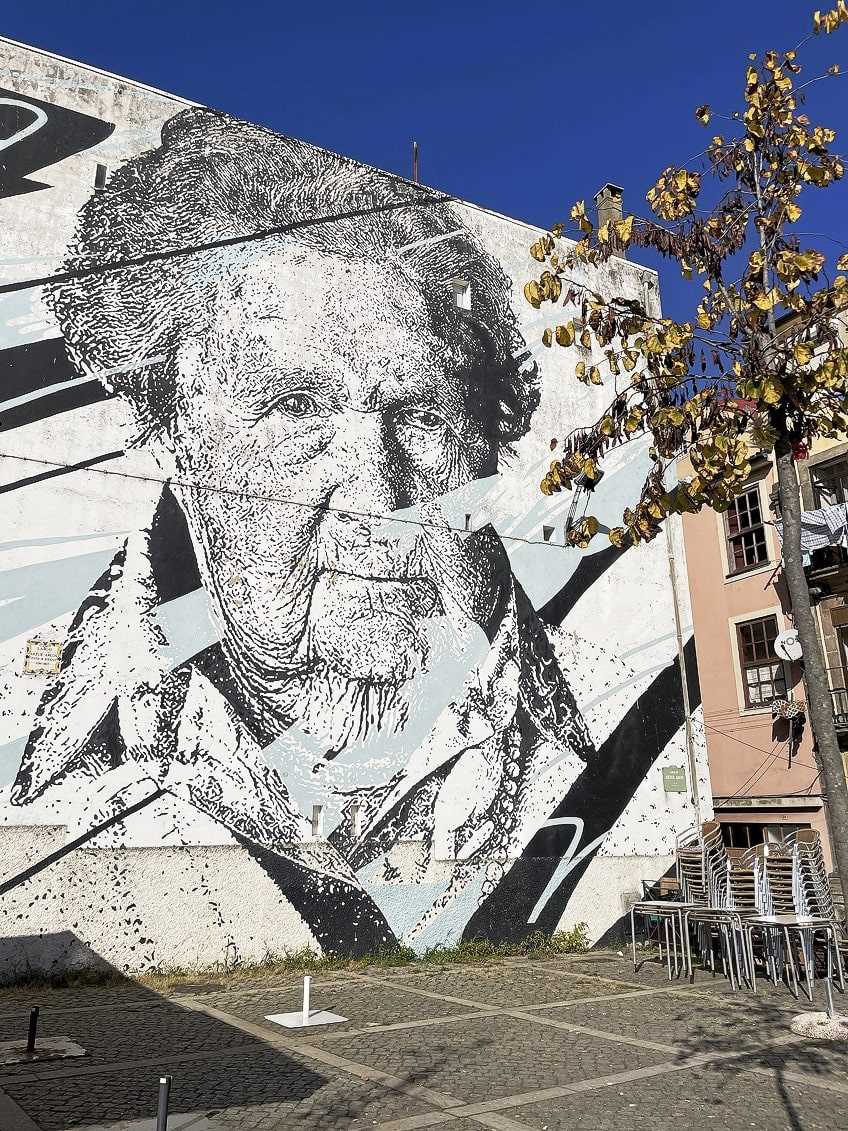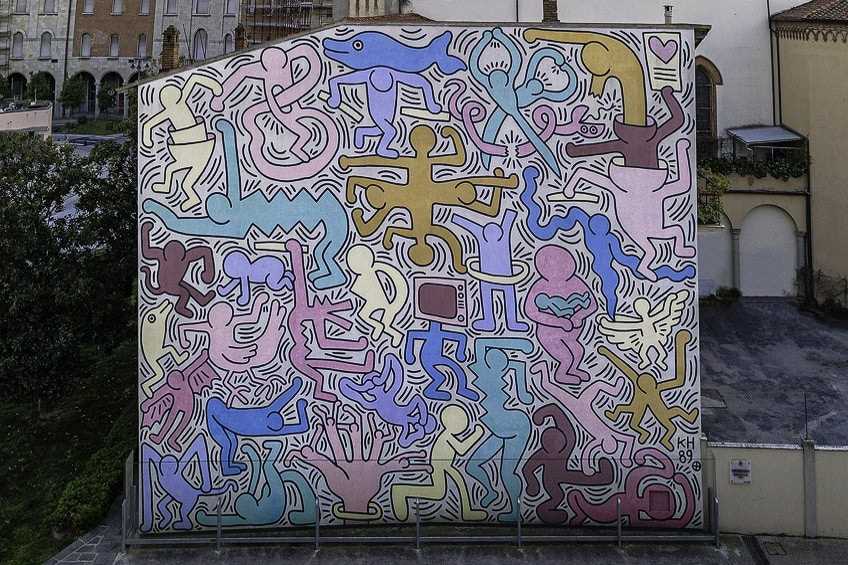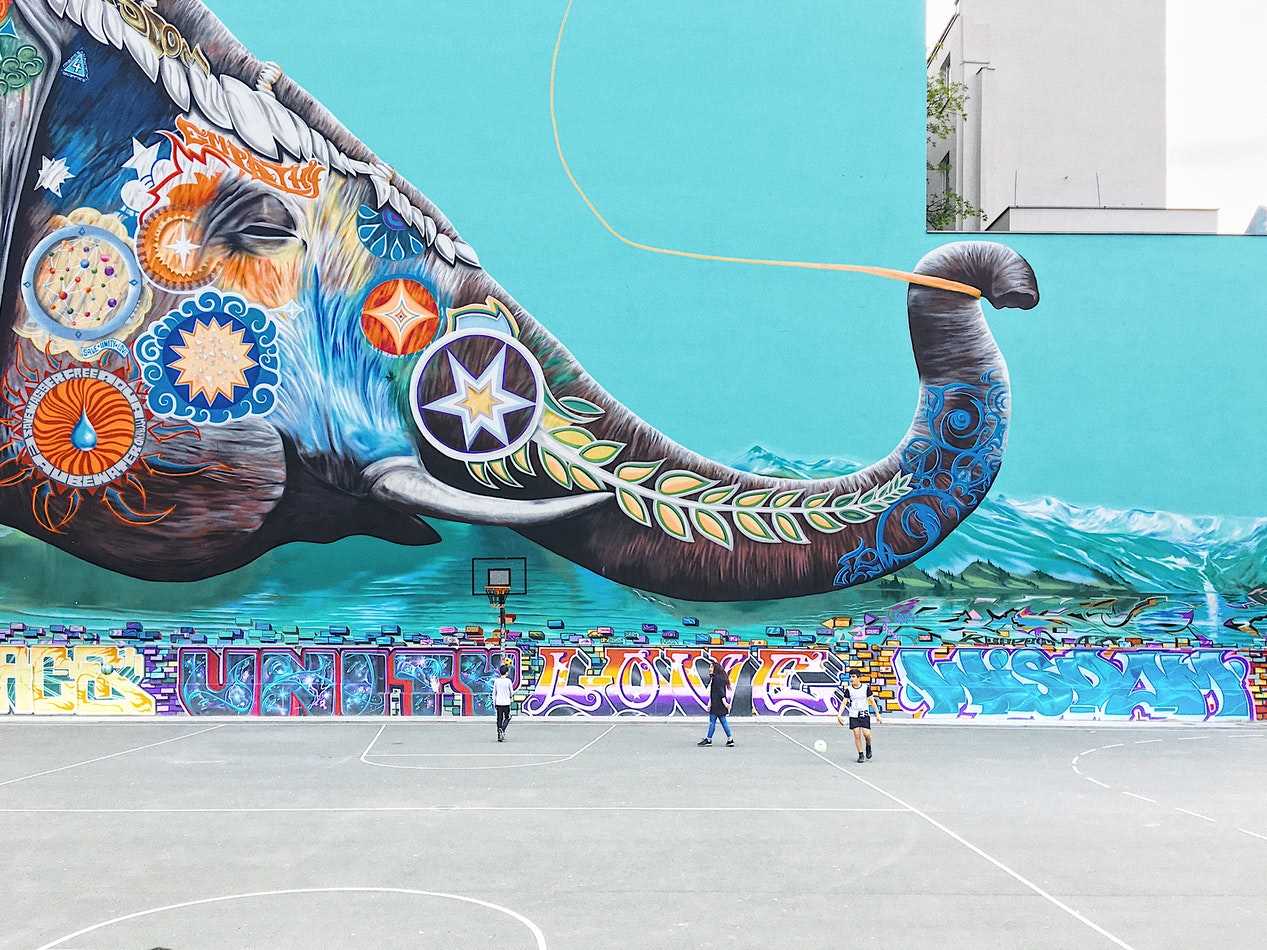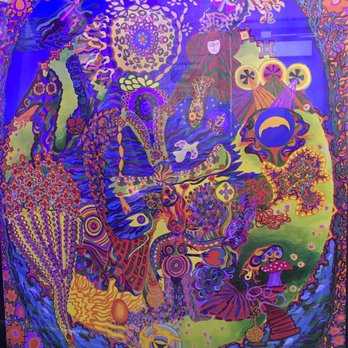A mural is a form of art that is painted or applied directly on a wall or ceiling. It is a large-scale artwork that can be found in public spaces, such as parks, buildings, and streets. Murals have been used throughout history to convey messages, tell stories, and beautify urban environments.
The word “mural” comes from the Latin word “murus,” which means “wall.” Murals have been created by different cultures around the world for thousands of years, from Ancient Egypt to the Mayans in Central America. In contemporary times, murals have become a popular form of artistic expression that can be seen in cities all over the world.
One of the defining characteristics of murals is their size. They are often much larger than traditional paintings and can cover entire walls or buildings. This allows artists to create immersive and impactful artworks that can transform the appearance of a space. Murals can be painted using various techniques, such as brushes, spray cans, or stencils, and can be made with different materials, including paint, tiles, or mosaic.
Murals can serve many purposes. They can be used to commemorate historical events, celebrate local culture, express political messages, or simply bring beauty to a neighborhood. They can also serve as a form of social activism, giving a voice to underrepresented communities and addressing important social issues. Murals have the power to engage and inspire viewers, creating a sense of unity and pride in a community.
Historical Context

Understanding the historical context of murals is crucial in appreciating their significance and meaning. Murals have a rich history spanning many different cultures and periods of time.
Ancient Murals

Ancient civilizations, such as the Egyptians, Greeks, and Romans, used murals as a form of artistic expression. These murals often depicted scenes from mythology, religious stories, or everyday life. They were commonly found in palaces, temples, and tombs, serving as a way to communicate important narratives and ideas.
Murals were also prevalent in ancient Mesoamerican cultures, including the Mayans and Aztecs. These murals were painted on the walls of temples and public buildings, showcasing intricate details and vibrant colors. They depicted various aspects of daily life, religious ceremonies, and historical events.
Murals in the Renaissance

The Renaissance period witnessed a resurgence in the popularity of murals. Artists like Leonardo da Vinci and Michelangelo painted monumental frescoes on the walls and ceilings of churches and palaces. These murals often depicted biblical stories and allegorical scenes, showcasing the artists’ technical skill and creativity.
The murals of the Renaissance were not only decorative but also served a didactic purpose. They were meant to educate and inspire viewers, communicating religious or moral messages. The use of perspective, light, and shadow in these murals created a sense of depth and realism, enhancing their visual impact.
Murals as Political Expression
In more recent history, murals have been used as a form of political expression. During times of social and political upheaval, artists have turned to murals to communicate messages of resistance, unity, and hope. For example, during the Mexican Revolution, the government commissioned artists to create large-scale murals that would depict the struggles and aspirations of the Mexican people.
Similarly, murals have been used in various civil rights movements around the world to raise awareness and call for social change. They have served as tools for commemorating important figures, documenting historical events, and communicating messages of resilience and empowerment.
Today, murals continue to be created and appreciated as a powerful form of artistic expression. They can be found in urban landscapes, museums, galleries, and even online platforms, serving as a testament to the enduring role of murals in society.
Symbolism and Interpretation

The mural is rich in symbolism and allows for various interpretations. It represents not only the artist’s personal vision but also carries a deeper meaning that viewers can connect with.
One prominent symbol in the mural is the use of colors. The vibrant and contrasting colors used by the artist evoke different emotions and moods. The use of bold reds and oranges may symbolize passion, energy, and vitality, while cool blues and greens can represent tranquility and calmness. The deliberate choice of colors allows viewers to feel a particular atmosphere or ambiance when experiencing the mural.
Another symbol that can be interpreted in the mural is the repetition of certain shapes or figures. These recurring images may have symbolic meanings, such as circles representing unity and wholeness, or spirals representing growth and evolution. These symbols can be open to personal interpretation, allowing each viewer to find their own meaning within the artwork.
The subjects portrayed in the mural also hold symbolic significance. For example, the depiction of animals, nature, or historical figures can convey important messages and themes. Animals may represent certain qualities or traits, such as strength or wisdom, while images of nature can symbolize harmony and interconnectedness. Historical figures or scenes can highlight significant events or ideas that the artist wishes to emphasize.
Personal Interpretation

Interpreting a mural can be a deeply personal experience. Each viewer brings their own unique perspectives, emotions, and life experiences to the artwork, which can greatly influence their interpretation. What one person sees as a symbol of hope, another may see as a symbol of despair.
When analyzing a mural, it can be helpful to consider the artist’s background, intentions, and the cultural context in which the artwork was created. However, it is equally important to allow room for personal interpretation and to recognize that there is no definitive “correct” interpretation. Instead, interpreting a mural should be a subjective and thought-provoking process.
Conclusion

The murals’ symbolism and interpretation provide viewers with the opportunity to engage with the artwork on a deeper level. The use of colors, shapes, and subjects within the mural allows for personal connections and interpretations, making the artwork a truly interactive and immersive experience.
Impact on Communities

Murals often have a significant impact on communities, both socially and culturally. They can serve as a way to express local identity and celebrate a community’s history, achievements, and diversity. The presence of murals in a neighborhood can help create a sense of pride and ownership among residents.
Community Engagement

Creating a mural often involves a collaborative effort between local artists and community members. This process not only provides an opportunity for artists to showcase their skills and creativity, but also allows the community to actively participate in the creation of public art. Through community engagement, murals can help foster a sense of unity and connection among residents.
Revitalization and Economic Impact

Murals have the power to transform neglected or run-down spaces into vibrant and visually appealing areas. This revitalization can attract tourists and visitors, boosting local businesses and the economy. Murals often become landmarks, attracting attention and generating interest in the surrounding community.
Additionally, public art initiatives, such as mural festivals or art walks, can bring people together and generate revenue for local businesses. These events create opportunities for artists and vendors to showcase their work and products, contributing to the overall growth and prosperity of the community.
In summary, murals have a profound impact on communities by promoting cultural expression, community engagement, and economic revitalization. They enhance the visual landscape, foster a sense of pride, and bring people together to celebrate and appreciate the unique character of a neighborhood.

I am a mural enthusiast and a fervent admirer of street art. Rather than creating murals myself, I am passionate about collecting them. My love for street art knows no bounds. I am dedicated to curating and cherishing these artworks that grace the streets. My collection stands as a testament to my profound appreciation for this form of artistic expression.
read about me



